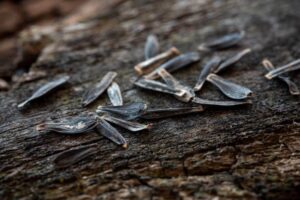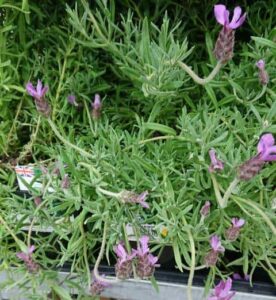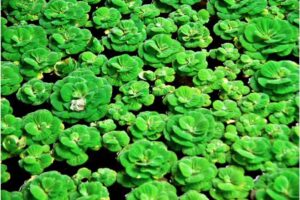
Pelleted lettuce seed is a type of seed that has been specially treated to form a hard coating. This coating helps protect the seed from diseases, insects, and other environmental factors. The coating also helps the seed to remain intact and viable during storage, which can extend the shelf life of the seed.
Pelleted seeds are typically larger than regular seeds, making them easier to handle and distribute. Additionally, pelleted lettuce seed is often pre-treated with a growth stimulant or other chemicals, making it easier to germinate.
Overview of Pelleted Lettuce Seed
Pelleted lettuce seed is an innovative and convenient way for gardeners to sow their lettuce crops. Developed through modern plant breeding techniques, pelleted lettuce seed is coated with a unique clay-based material that makes it easier to handle, store, and plant.
This clay-based coating also helps to protect the delicate lettuce seed from weather and pests, giving it a better chance of germinating and producing a healthy lettuce crop. Pelleted lettuce seed is ideal for those who are just starting out and want a foolproof way to get their lettuce crop off to a good start.
Benefits of Pelleted Lettuce Seed
Pelleted lettuce seed is an excellent choice for gardeners looking to effortlessly grow their own lettuce. The pellets are easy to handle and less prone to birds or other critters eating them, making them ideal for outdoor planting.
Additionally, pelletized lettuce seeds reduce germination time, so you will be able to enjoy the fruits of your labor sooner. Once planted, the pelletized lettuce seed grows quickly, producing a healthy and bountiful harvest.
Pelleted lettuce seed is also perfect for indoor hydroponic gardens, as the pellets keep the lettuce seeds evenly distributed and protected from any potential bacteria or fungi. With pelletized lettuce seeds, you can enjoy a fresh and healthy harvest of lettuce without the hassle of traditional planting.
Types of Pelleted Lettuce Seed
Pelleted lettuce seed is a great way to start your garden. It’s easy to plant, requires minimal care, and provides a delicious harvest.
There are many types of pelleted lettuce seed, each offering its own unique flavor and texture. Whether you prefer a crisp, crunchy leaf or a soft, buttery bite, there’s a pelleted lettuce seed to suit your taste.
From the classic iceberg to the diverse romaine, each type has its own unique characteristics and can be used to create delicious salads, sandwiches, and more. With so many choices, the possibilities are endless! Get creative with pelleted lettuce seed and add some tasty greens to your garden.

How to Plant and Care for Pelleted Lettuce Seed
Planting and caring for pelleted lettuce seed is a great way to ensure you have a successful harvest of fresh and delicious lettuce! To get started, you’ll need to prepare the soil for your seedlings. Make sure to add a layer of compost and a slow-release fertilizer to your soil and mix it thoroughly.
After the soil is ready, it’s time to plant your seeds. To do this, use a seed planter or simply sprinkle the seed onto the surface of the soil.
Make sure to space it evenly and cover the seed lightly with soil. Water the seed and keep the soil moist until germination occurs. Once the seedlings have emerged, thin them out to give them enough room to grow.
Finally, be sure to keep an eye on the soil’s moisture levels and give your lettuce plants plenty of sunlight. With the proper care, you’ll be enjoying your freshly-harvested lettuce in no time!
Common Pests and Diseases for Pelleted Lettuce Seed
Pelleted lettuce seed is a popular choice for home gardeners because it is easy to sow, grows quickly, and produces a bountiful harvest.
However, with any type of gardening, there is always the potential for pests and diseases to wreak havoc on your plants. Common pests and diseases to watch out for when planting pelleted lettuce seed include aphids, flea beetles, and downy mildew.
To protect your lettuce plants from pests, it is important to keep your garden clean and practice good garden hygiene. Be sure to inspect your plants regularly for signs of infestation and take action if you spot any.
For diseases, be sure to rotate crops annually and practice preventive measures such as using disease-resistant varieties. With a few precautions, you can help ensure a successful harvest from your pelleted lettuce seed.
Troubleshooting Tips for Growing Pelleted Lettuce Seed
1. Difficulty in Germination:
- Soaking: If the pellet coating isn’t dissolving, you may need to soak the seeds briefly before planting.
- Temperature: Lettuce seeds germinate best at temperatures between 55°F and 65°F (13°C to 18°C). Too hot or too cold can hinder germination.
- Moisture: Keep the soil evenly moist but not soggy. Cover the seeds lightly with soil.
2. Inconsistent Growth:
- Spacing: Ensure that the seeds are properly spaced. Crowding can lead to inconsistent growth.
- Nutrients: Make sure that the soil is rich in essential nutrients. Use a balanced fertilizer if necessary.
- Light: Lettuce requires ample light. If growing indoors, provide 12-16 hours of bright but indirect light.
3. Disease and Pests:
- Good Hygiene: Sanitize tools and use clean, sterile soil to prevent diseases.
- Proper Watering: Water at the base of the plants, not overhead, to reduce the risk of fungal diseases.
- Monitoring: Regularly check for signs of pests and diseases, and treat them promptly with appropriate organic or chemical controls.
4. Difficulty with Pellet Dissolution:
- Proper Watering: If the pellet doesn’t dissolve, it might not be receiving enough moisture. Adjust your watering accordingly.
- Check Pellet Age: Older pelleted seeds may have a harder coating that’s more difficult to dissolve. Fresh seeds may perform better.
5. General Care:
- Soil Type: Use loose, well-draining soil. Heavy clay soils may inhibit growth.
- Thinning: If you sow multiple seeds per hole, thin to the strongest seedling to ensure healthy growth.
- Avoid Transplant Shock: If transplanting, do it carefully to minimize root disturbance.
FAQs About the What Is Pelleted Lettuce Seed
What is the best time to plant pelleted lettuce seed?
Answer: The best time to plant pelleted lettuce seed is in early spring when the soil temperature is between 60-75°F.
How deep should I plant pelleted lettuce seed?
Answer: Pelleted lettuce seed should be planted 1/4-1/2 inch deep.
How long does it take for pelleted lettuce seed to germinate?
Answer: Pelleted lettuce seed typically takes 7-14 days to germinate.
Conclusion
Pelleted lettuce seed is a great way to get your garden started with a bang. It is easy to grow and provides a steady supply of fresh lettuce for salads, sandwiches, and other recipes. It’s also a great way to introduce a new variety or variety blend into your garden. With a little patience and care, you can enjoy an abundance of fresh, homegrown lettuce all season long.







